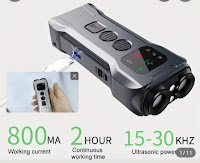Mechanical stress rejuvenates cells. Is it the long-sought elixir of youth?
In my previous post, I discussed aging and how it can be influenced. We saw that aging is closely linked to the aging of individual cells, with their undamaged DNA, and the activity of repair mechanisms. To ensure proper DNA repair, the cellular energy production system — specifically, ATP synthesis — must function correctly. This requires a well-working antioxidant system based on glutathione, which must not be disrupted by products of auto-oxidation of omega-6 linoleic acid. These oxylipins (e.g., HNE) bind to enzymes and impair their function. If they block DNA repair, they trigger cellular senescence.
As we age, senescent cells accumulate. This is the body’s defense mechanism — cells reduce energy production via oxidative phosphorylation and switch to fermentation, keeping auto-oxidation within tolerable limits. While senescent cells remain partially functional, they cannot replicate when needed, nor can they be cleared when in excess. They also ignore external signals.
Is it possible to suppress the transition from a healthy cell to a senescent one? Or even turn back time, restoring senescent cells to normal function — reactivating oxidative phosphorylation and responsiveness to external signals?
Yes. Some studies have achieved this at the cellular level. One particularly interesting recent study successfully "rejuvenated" cells — and even entire mice — using an ultrasonic bath, similar to an ultrasonic jewelry or glasses cleaner. Remarkably, this extended the mice’s lifespan by several months. See for yourself:
 |
| Mouse lifespan in days — declining curve shows mortality. Black = control group, others = different ultrasound therapy intensities. |
How does it work? The exact mechanism isn’t fully understood yet, but researchers found that low-frequency ultrasound (LFU) pressure waves stimulate calcium ion channels (Piezo1) in the cell membrane, which respond to mechanical stress.
 |
| Mechanism of LFU therapy — Ca²⁺ influx → AMPK activation → autophagy → cellular rejuvenation. |
An older study also examined how ultrasound induces cancer cell apoptosis (programmed death).
The setup resembles an ultrasonic cleaner, but effectiveness strongly depends on wave intensity and frequency. More research is needed before clinical use.
 |
| Arrangement and procedure for determining the most appropriate therapy intensity. Optimal LFU intensity is 4 kPa pressure at 33 kHz, duty cycle 1.5 sec ON / 1.5 sec OFF. |
Senescence is marked by proteins like p16 and p21 — previously discussed in relation to senescent fat cells causing insulin resistance. Ultrasound therapy reduces these markers in mice.
 |
| LFU therapy in male (M) and female (F) mice reduces p16/p21 in kidney and pancreas cells. |
Ultrasound therapy could complement acetate’s anti-senescence effects, as both activate AMPK and SIRT1. Interestingly, 33 kHz ultrasound (LFU) triggers the same pathways.
A recent study explored ultrasound’s effect on muscle insulin resistance. While results were modestly positive, optimization is needed before human application. The good news? The used ultrasound intensity is safe and easy to generate. Combined with acetate (which works well in rodents), the effects could be even stronger.
 |
| NC = normal diet, HFHS = high-fat/high-sugar, LFU = ultrasound therapy, STZ = diabetes |
Small addition
If you like to experiment and you have a specific problem related to a small part of the body not repairing itself and suffering from a chronic problem, you can try using a handheld ultrasonic dog trainer. It can emit quite strong ultrasound with a frequency of about 30 kHz and can be easily applied to the desired location. Of course, this is only your choice and responsibility, I do not advise you anything.
References:
Rejuvenation of Senescent Cells, In Vitro and In Vivo, by Low-Frequency Ultrasound
Enhanced tumor cell killing by ultrasound after microtubule depolymerization






Comments
Post a Comment